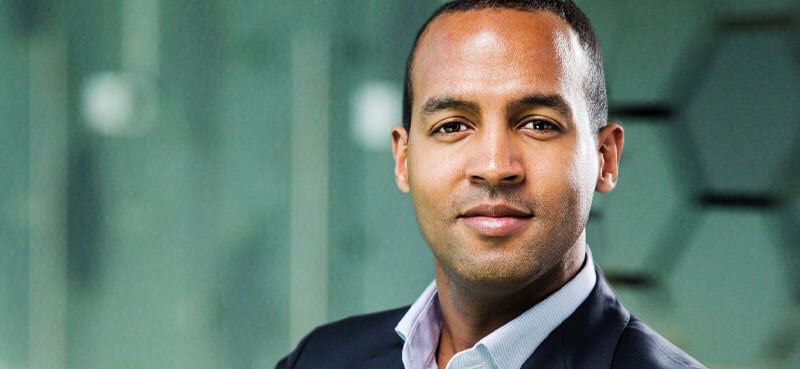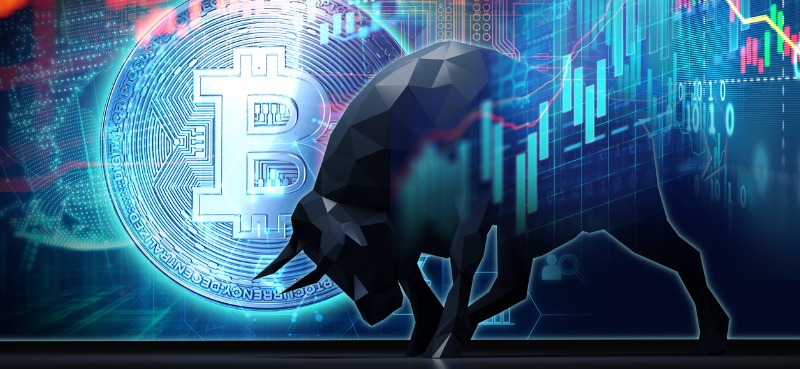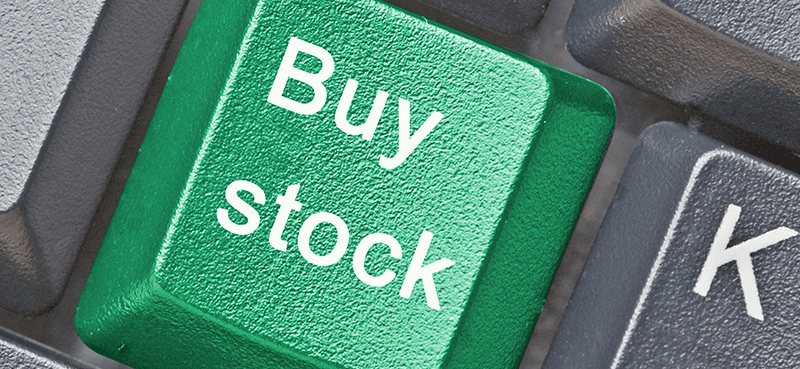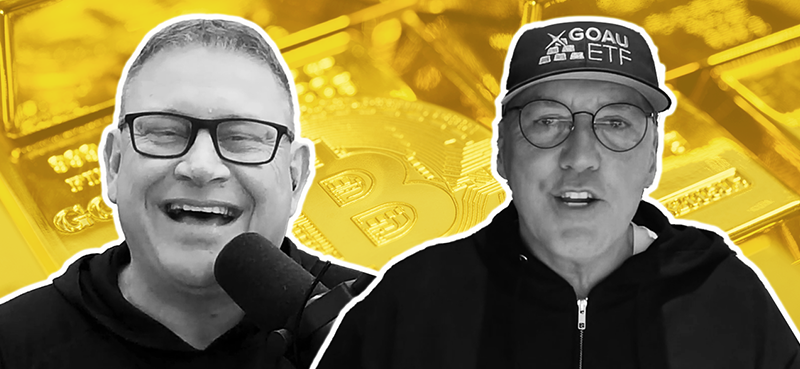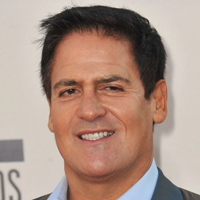tZERO is the leader in digital securities trading… It’s also where our Curzio Equity Owners (CEO) token will begin trading soon…
And today, Solomon Tesfaye, the head of business development and capital markets at tZERO, joins the show to share where the industry is headed as adoption accelerates. [0:30]
We discuss the evolution (and steep learning curve) of capital-raising in the sector—from initial coin offerings (ICOs) to security token offerings (STOs)… and why the latter will continue to see massive growth. [1:35]
In September, crypto wallet provider Exodus began trading on the tZERO platform… successfully raising capital through a Reg A offering. Solomon explains why this is a huge deal for the industry—and individual investors. [4:45]
Next, he breaks down tZERO’s extensive security token pipeline—from real estate to mining to tech to healthcare… how the firm is partnering with institutional investors… and its work with regulators—with a goal to bring stocks and digital assets onto a single platform. [7:25]
We wrap our interview with Solomon’s predictions for the industry over the next three years. [18:01]
By the way, you’ll need to open an account on tZERO in order to trade the CEO token (don’t worry, it’s super easy). [21:05]
There’s a fundamental shift taking place… We’re in one of the most leveraged markets in history—and the Fed must start raising rates to combat the current inflation crisis. In other words, it can’t keep throwing money at this problem. And we’ll continue to see massive volatility heading into 2022. [24:01]
We launched Moneyflow Trader to show you how to hedge against conditions just like this. During the credit crisis, Genia recommended winners of 500%-plus. [28:28]
- Solomon Tesfaye, tZERO’s head of business development [0:30]
- The evolution from ICOs to STOs [1:35]
- Why Exodus’ Reg A offering is a huge deal for the industry [4:45]
- How tZERO is working with institutional investors and regulators [7:25]
- Solomon’s predictions for the next three years [18:01]
- How to open an account on tZERO to trade security tokens [21:05]
Wall Street Unplugged | 833
My conversation with a leader in digital securities
Announcer: Wall Street Unplugged looks beyond the regular headlines heard on mainstream financial media to bring you unscripted interviews and breaking commentary direct from Wall Street right to you on main street.
Frank Curzio: How’s it going out there? It’s December 16th. I’m Frank Curzio, host of the Wall Street Unplugged podcast where I break down headlines and tell you what’s really moving these markets. So, a great interview setup for you right now with Solomon Tesfaye. Solomon is a head of business development capital markets for tZERO, which is the largest security token platform in the world based on volume, and yes, the platform that we’ll be trading on soon at Curzio Equity Owner’s token. So, I met Solomon I think close to three years now, a really long time. We’ll be talking about security tokens and the industry, and we both waited patiently.
Frank Curzio: This market developed, people felt was inevitable, but I went to go see him in New York City, his headquarters. It was pre-pandemic, and they’re in the Freedom Tower like the 64th. So amazing, it’s awesome. I met his team. There’s a lot of fun, but just happy to have him on because we’ve been doing this for a while, the ups and downs, which you’ll see in this interview. He’s going to go over everything that’s going on security token industry and how exciting it is right now when it’s been crazy, right? Really crazy, but now we’re at a point, an inflection point, really excited, lots of new names. It’s cool that ours is going to be launched on that platform. So you know what? Let’s jump right into the interview right now. Solomon, what’s going on, man?
Solomon Tesfaye: It’s good to be here. Thanks for having me, Frank.
Frank Curzio: So, how are things in security token land? We’ve known each other for a long time. We pretty much do… I think what we’ll get to this point. I think we’ve been very patient, but how are things going on in your end? How things go in at tZERO? And hey, give us quick background, man.
Solomon Tesfaye: Absolutely. So first of all, really appreciate your support over the years. I know you’ve always been a big advocate of the platform, but it’s exciting times right now, it’s long time coming. So, just to fast forward, I think in general, looking back, a lot of individuals really thought that the security token market or the digital security market was going to grow much faster than anticipated, but I think once they realized that there is a learning curve, an educational piece of this. And then there was some residual from the ICO days and that there was a strong focus on capital raising historically, which as we know, there’s a lot of variables to capital raises that increase our impact timeline and then COVID is not the best backdrop. I think it’s been a stretch, but it’s been a good one and a lot of learnings came from it and I’m glad to see that we’re in a very good place now.
Frank Curzio: I think we all learn from it. What are some of the biggest changes you saw? Because I thought… We spoke and I met you, this is pre-COVID when I met you at your offices in New York City. I felt really good about this market, but yet, it just seemed like the regulation part, the custody part, I think was it that a lot of people took it for granted? Is it just a regulatory, the compliance was just slow to the party? What took so long and how is this resulted in where we are right now, what you’re seeing more and more names come out and start launching security tokens?
Solomon Tesfaye: So, I think mostly people were comparing the growth in the digital securities world to crypto or ICOs, which were basically unregulated offerings at that point. And so, there was just a lot of infrastructure that people didn’t take into account. And going back to the fact that a lot of people just was focused on capital raises, when we approached an issuer that was doing a capital raise. Naturally, often times, you’ll see three to six months at least to do or conduct a capital raising. A lot of these capital raises were what we call Reg D 506C private placements. So, they were also subject to lockup periods after the capital raises were closed.
Solomon Tesfaye: So, I don’t think individuals really factored in the longevity of a normal private placement and the lockup period that’s applicable for that particular type of offering. And I think a really a big shift is one, as you touched upon, a lot of more sophisticated counterparties have now entered the ecosystem. Also, there’s been a shift in focus instead of capital raises to more direct trading scenarios. So, assets that have already done a capital raise historically, and they’re simply looking to give those investors liquidity optionality. There’s still always going to be a subset of issuers that are pursuing this that are doing a capital raise or build or re-capitalization before they want to have their equity trading, but this shifts to more so direct trading, similar to direct listing. This set of assets creates a higher degree of predictability to onboarding assets onto the platform.
Frank Curzio: Now, we saw a real big deal of Exodus launching a platform where they raised 75 million. What was interesting about it was Reg A, right? So, talk about Reg A, why that’s a gamechanger because I think sometimes the average investor, they want to get into private things, but they thought that was through crowdfunding until they really got burned with Facebook and Oculus Rift and realized, “You don’t own equity, right?” So now, this Exodus launching a platform raising $75 million. That’s just a lot of money to go in your platform where the average investor could actually buy into this and then they have they could trade this security, right? You’re not locked into a private security for seven, 10 years or whatever, but talk about that process because to me that’s a gamechanger.
Solomon Tesfaye: Absolutely. And that was a gamechanger on a number of different levels. One, historically, we saw a lot of assets that were more tangible assets, whether it’s real estate or industrials or minerals of mining energy and then this was really a young pre-unicorn name, if you will, that looked at pursuing this and one that also had the option to go public if they so choose, given their scale. So, they raised 75 million, like you mentioned, from 6,800 investors within their ecosystem and their crypto wallet provider, for those that are not familiar with Exodus as a business state, have over 1.5 million users in 200 countries. So, definitely a scale, and they actually raised the 75 million in nine days. They were significantly oversubscribed which was very attractive to us, given the fact that that demand would translate over to the secondary side of things.
Solomon Tesfaye: And so, after raising the capital, since the Reg A+ and you can maximize that to 75 million, which is the max cap on Reg A+, they want to give those investors which was very broad the standard deviation of investor types, retail, high net worth individuals, family offices that comprise that capital structure. We are providing them with the liquidity optionality on the backend. So, they’re now live in trading, a company that has investors on it that actually view liquidity optionality is very, very attractive because as you can imagine, the retail investors that are writing, whether it be a couple a hundred, $10,000 really liquidity optionality is very attractive because life events do happen.
Solomon Tesfaye: And so we’ve seen on the frontend primaries issuance portals really support primaries online, whether it’s the powers of the world, seed investor of the world. This is a natural evolution of the private markets, if you will, we can actually facilitate the secondary trading of assets. It was great success stories. The team over there has been very pleased with it. And we are seeing a number of other players of similar scale that are now looking to pursue this as a contrast to their options from traditional value exchanges or beyond the actual ATS itself, in our case tZERO ATS.
Frank Curzio: So, other players at tZERO, and I know you can’t, not to get into specifics, but I want to be broad about this, what are some of the people coming to you that you’re seeing, right? You’re starting to see demand, more people launching this and starting to take off security tokens and these offerings. Is it through real estate and liquid assets, right? There’s a way again, that secondary trading. Is it the bond platform or is it companies like Exodus and our self wants your security token? What kind of demand you are seeing? Is it across every platform? Is it just you seeing certain demands in certain areas?
Solomon Tesfaye: So, real estate definitely is the strongest asset class, and we continue expects it to be most of 2022, but our pipeline is actually very diverse. Second to real estate, we have funds, of course, a subset of those that do focus on real estate, but growth equity funds as well as we’re seeing in other tangible assets, I mentioned industrials, energy assets, metals and mining. And then, also, we’re seeing a significant uptick, especially post-Exodus in tech, and also in healthcare, for that matter. So, we are seeing a wide range of different types of asset classes. And then, over the last few years, we’ve seen also just a higher degree of sophistication of the counterparties. We also benefit from the fact that a lot of our interactions with asset managers where they may syndicate deals on a deal-by-deal basis.
Solomon Tesfaye: So, rather than it be a one and done transaction with onboarding specific asset and allowing trade, they really view this as transformative for their full portfolio where they may be looking to onboard 20 different assets to each have their own ownership structures. And they’re essentially looking to create potentially a perpetual equity, where they allow a portion of that equity in a particular asset to float and share on the platform. And it’s just an elegant solution to give investors liquidity optionality and then assets may not be big enough to justify going public, and the GP may not want to sell the asset given the macroenvironment, or they just think it has a very good financial profile, and they’d like to hold on to it longer, but they obviously understand that they need to give their investors some type of liquidity optionality.
Solomon Tesfaye: On the fun side, they view this as a very elegant solution for the redemption programs. Instead of having to use cash in the administrative hassle around that, why not let your LPs trade on the backend? So, we’re seeing a wide degree of applications, whether it be more the traditional verticals, or whether it be more esoteric products that are putting escrow in a private placement being done off those two fractionalize it
Frank Curzio: It’s really cool. It’s really cool. Hey, what are you seeing in terms from institutions? Because I think that’s where Bitcoin really took off, right? It reminds me of this market where, listen, 2014-15, a little liquidity here and there, yes for Bitcoin, yes for Ethereum, but not really for a lot of issues and all sudden started taking off. Then this market turned into a trillion dollar market and now you’re seeing $2 trillion. We saw a little bit of a pullback, but now you’ve seen institutions getting involved. Andressen-Horowitz largest venture capitalist companies investing 20-30 different deals, what are we seeing from the institutional side? Are institutions getting interested in the investment portion of this? Are they looking to establish their own security tokens, because I think that’s really a gamechanger, or are we still in the early stages?
Frank Curzio: Because what these institutions and these big guys really want, what they need to see is liquidity and we have it, but we don’t have it like we have in the utility tokens, right?
Solomon Tesfaye: Exactly. So, we see institutional connectivity is number one priority in terms of just gaining scale. We need to have institutions participate in this ecosystem, scale appropriately. So, we see institutions engage in a couple of different ways, one on the primary side. So similar to the relationship that New York Stock Exchange or NASDAQ has with investment banks and IPO context. tZERO, we’ve established many different CSAs that are basically referral agreements with different investment banks, mostly middle market investment banks, where they are working on a private placement, and then they’re trying to allow you to trade on our platform after the fact because it acts as a catalyst for their capital raise process.
Solomon Tesfaye: And so, as a natural adjacency, it doesn’t compete with them in any capacity. So, if they’re working with a client that’s doing a capital raise, they will just basically ensure that it’s conducive for secondary trading by eliminating transfer restrictions or first right of refusal, things along those nature’s and then we, of course, will be able support from a secondary trading perspective after any applicable lockup period. So, that’s the relationship we have with investment banks. And then on the issuance portal site, very similar dynamic, whether it’s issuance portals are asset specific or asset-type specific or more broad ones or household names. We have relationships with those as well in terms of on-ramps onto the platform.
Solomon Tesfaye: Also, law firms as well are also a source of significant amount of referrals onto the platform. And so we are creating the same kind of web of on ramps that you’d expect any trading venue to have. And then from a demand perspective on the secondary side, we have built the tZERO ATS to support actual broker dealer subscribers. So, we have almost a dozen broker dealer subscribers that are connected to that platform. And of course, they choose which securities they intend on supporting and allowing their retail investors to have access to. And when we onboard an asset, oftentimes, some of these assets may have very deep cap tables similar to Exodus, where they have 6,800 investors on a cap table when they first came onto the platform.
Solomon Tesfaye: And then also, we’re onboarding XY labs that we’ve indicated we intend to supporting in Q1 of next year which has 24,000 investors in that cap table. So, we expect those investors to crosspollinate into other assets on the platform. And then really, when we look at tZERO as a platform, we’re really intending on creating a unified experience. So, we do have a crypto business that’s completely bifurcated from the securities business. And we will be unifying these experiences between crypto and private security system. We can go from crypto into private securities or vice versa. Naturally, the plumbing will be different on each one, given the regulatory framework, but UX experience will be seamless.
Solomon Tesfaye: And then, we’ve also been approved for NMS security, so think of the Teslas of the world, the Apple shares of the world. And so, we’ll also incorporate that into our ecosystem. So investors can deploy capital in any of these particular asset classes on the platform, but we’re in talks with a lot of that household institutions at the educational stage with them and some of them have already created integrations with our platform to be very proactive about engaging in the space.
Frank Curzio: Now merging those two platform, that’s interesting, because you have… Where you trade Bitcoin, Ethereum, and some of the largest utility tokens, and now you have the digital securities which… Merging those two together, has that been like a regulatory concern, or now that has passed and now you’re going to be able to do it. I’m just curious, I don’t know how much you could talk about it, but for me, that seems like all that on your mobile app would be unbelievable, right? We know that’s where most people trade cryptos. But has there been regulatory problems behind that where they were like, “Well, we just got to dot every I and cross every T to make sure this is okay.” It just seems like that should be done, but I could see just not everything flows and there may have been some kind of hurdles there.
Solomon Tesfaye: So, we are lucky enough to have a great legal and compliance team. So, they’ve been… I wouldn’t say there was ever a problem. It’s basically working alongside the regulators to make sure that we do everything in a very buttoned up manner. As you can imagine, we own three broker dealers. So, we have to make sure we approach it in a very conservative manner, but it’s basically been working alongside of regulators as opposed to any particular bottlenecks in that journey. But this incremental journey whether it’s unifying the actual interface amongst all these different parts of our business, or whether it’s onboarding assets and onboarding larger and larger assets, so that we do get more institutional connectivity because the market cap has to be big enough where any institution thinks it’s worth their time deploying capital within that particular market cap. So, I have multiple workstreams in parallel to really create the most healthy ecosystem, whether it’s retail engagement or institutional engagement.
Frank Curzio: It definitely makes sense. So how is tZERO positioned here? Because as you know, as well as I do, now this industry is finally opened up. And again, we talked about that for I think almost four years now, right? But now that it’s opened up, you’re seeing competitors enter the market, right, other ATS’s? How do you guys maintain that leadership? And for me, I would think like, “Yeah, competition’s coming up, but right now, with the size of this industry and what we think it could be in terms of scale, I just think the more people entering the market, the better it is right now.” But of course, you want to maintain that edge where you’re going to have the best companies come to your platform, right? How do you intend on doing that with tZERO?
Solomon Tesfaye: Yes, I completely agree with you, Frank. I think the more entrants, the better to grow the ecosystem and the private markets is just so much bigger than the public markets, that it presents a unique opportunity for all of us to thrive. It all comes down to execution. And so from our perspective right now, we do have the global liquidity leadership. We do have the most asset value trading on our platform. And we do have most institutional connectivity. And so, I do think we’re uniquely positioned to continue to thrive. And also, a lot of relationships that we have with partners globally, they formed over the last three years.
Solomon Tesfaye: And so, when you think about just the network of on ramps that we’ve established, the relationships that we have with issuers like yourself, these are not an overnight dynamic. This takes a certain amount of credibility that when you’re interacting with these particular partners and issuers and then also they actually have to do reverse due diligence on you as a platform. And so, I think we are fortunate enough to have a meaningful head start regarding establishing a lot of network and where a lot of the counterparties who are interacting with and stated that we have been their only option at this point in time in terms of pursuing this early stage of the ecosystem, if you will.
Frank Curzio: How easy is it? Is it just as easy as setting up your normal account? Because even for us, public news, that we’re working together so we can get our Curzio Equity Owners token launched in your platform, which is coming soon. How easy is it to set up an account? Is it because I know when you go to other services, it’s pretty quick. I think people expect that, but that was one of the things with other places, which I realized. Hopefully, technology gets better. It’s got to be a quick experience, but how easy is it to do on your platform and can you explain that for anyone, even from our listeners that you’re going to show this to, or who’s going to view this video of how they can actually open up an account at tZERO and how they can actually trade security tokens, which includes ours hopefully pretty soon?
Solomon Tesfaye: Absolutely. And so, first of all, we’re very excited to host Curzio Equity on the platform. I know it’s been a long time coming. So Frank, I really appreciate your patience and your support over the years. And then, regarding setting up an account, it’s very intuitive, just like setting up a Robinhood account or E*TRADE or Schwab account. You basically go to tZERO Markets, you go to login and then you go through your standard brokerage creation experience, when you look at AML and KYC. And then, by the next day, you could be trading on the platform.
Solomon Tesfaye: So, we’ve extracted out anything that would be a steep learning curve from a blockchain perspective, so that the whole experience feels very much like a public equity trading experience, except the tickers happen to represent private equities for the most part on the platform.
Frank Curzio: I hear you. So now, let’s talk about the industry as a whole. Where do you see this? If I were to ask you three years ago, I bet you it might have been the same answer from both of us, “Wow, this is going to be big 12-18 months from now.” And then it took a little bit longer, and look, COVID threw a wrench in the system for, I think, a lot of different industries and supply chain, stuff like that? Right now, with the demand you’re seeing, more tokens are being launched, I know you’re having fun right now, I’m having fun right now, it hasn’t been as fun, right? It’s been a rocky road, which I think makes it more pleasurable that you go through that the ups and downs it, beating the crap out of you and just keep fighting and fighting and fighting see where you are and you’re still standing man, it is like a pride factor there, right? And I think you know what I’m talking about.
Frank Curzio: But where do you see this industry now compared to where it would be 12 months, and even say 36 months, from now in terms of the amount of tokens being listed, the adoption institutions? What are you seeing? And you would know best because I think you talked to everyone within all these facets, much more than even me.
Solomon Tesfaye: So right now, it feels good to finally hit our stride, if you will, from a business development perspective in terms of onboarding assets. So, I would say that you’re going to see actual asset managers that are actually onboarding a substantial amount of their portfolio that they’ve actually syndicated on a deal-by-deal basis. We have counterparties that intend on onboarding more than 20 assets as an individual counterparty. And so, I think you’ll be basically surprised at the frequency, I think, of assets coming onto the platform, the sophistication of the counterparties that we’ve been in dialogue, some over a year, some close to two years, that are now looking to double down into space.
Solomon Tesfaye: I think we’ll see more and more institutional connectivity. We don’t make it public all the different referral agreements we have with investment banks and other counterparties, so I think that network is going to continue to grow. And I think a lot of issuers are just really going to have to at least dip their toes in digital securities world. We’re in dialogue with a lot of the large consulting firms that are hearing about from their clients that they’re looking at engaging in this space. They’re also trying to get foresight regarding what the developments have been over the last couple of years. So, I think it’s going to be an overall adoption. It’s going to really grow throughout 2022, and then it’s going to be more of a hockey stick from there, as you get the echo effect of other asset managers onboarding a lot of their assets or basically the on ramps of investment banks or issues portals, actually building this into their actual process flow where they conduct the primary and hand it off to a player like us for the secondary.
Frank Curzio: That’s great. Well, Solomon, listen, I’ll leave it there. I know how busy you are, especially today. We pushed this back a couple times, and I know, I know, what you’re going through because I’m going through it too, and it’s been pretty crazy, but being busy is a good thing. So, I appreciate you coming on. I appreciate the friendship we’ve had in the last few years, just seeing where we were there, where we are now, and I look forward to the future and trading on the platform. And I really appreciate you coming out, man.
Solomon Tesfaye: Absolutely. It’s been great watching your platform grow over those years as well. And looking forward for you to be able to provide coverage on a lot of the digital securities that are trading on the platform as well. I think that’s just the natural progression of things. So, I look forward to working with you closer and closer over the years.
Frank Curzio: That sounds great, man. All right, I’ll talk to you soon.
Solomon Tesfaye: Thanks for having me.
Frank Curzio: Guys, great stuff from Solomon, really one of the good guys. Works his ass off, which I know for a fact since we’re sending texts back and forth all the time really, really late at night, especially true for past few weeks as we get set to launch Curzio Equity Owner’s token on their platform. So, to trade our token, you have to open account at tZERO, which he explained. And you could fund that through crypto, use it through your bank or wire transfer pretty much just like every other crypto platform out there. Once you do, you’ll be able to buy and sell the Curzio Equity token and several tokens that they have on their site. You can see dozens and dozens of more I think in the future which is cool on where they’re going in the quarters and years ahead. So really, really exciting stuff.
Frank Curzio: But what I’m happy about what we talked about, it’s been a lot of work to get here, to get to this point, to get to where… We’re a US-based company. We were trading on a foreign exchange on a foreign platform, which was cool, but again, it is a foreign platform. We didn’t really see the volume that we wanted, even those guys are really, really great. And now, to be a US-listed security token trading on a US-based security token platform. And that was the goal all the time. I told you that years ago. So this is a really exciting times for us. It’s been a lot of work, a lot of stuff going on behind the scenes, trying to keep you guys updated because there’s been tough market conditions too. A lot of things are getting nailed.
Frank Curzio: Even though you’ve seen the overall indices stay up a little bit mostly because of the Microsofts, Apples which Apple is approaching $3 trillion valuation of their market cap, the Nvidias, the Teslas, the Googles, the Amazons, they’re accounting for 30-32% of the overall market. I think it’s like $11-12 trillion in market cap. And when they’re keeping that market afloat, underneath it, it’s really, really crazy where 40% of the companies in the NASDAQ over 3,600 are down more than 40% from their highs, right? So, you see a lot of stocks getting hit and stuff like that. So, we try to provide updates, doing all this, getting everything done and the holidays with the kids and stuff like that. So, it’s been pretty nuts. I’m really excited to finally launch this thing pretty soon, and I really want to thank Solomon for coming on. That was cool, but guys, that’s it for me.
Frank Curzio: We do have some special promos to end the year, including one for Crypto Intelligence, since we keep getting requests, crypto pulling back, which we expect in the short-term. I think it was in the promo. I think long-term, we’ll look at Bitcoin at 100,000. I don’t know what’s going to go in a couple months. It raised up to 66,000, now it’s a little bit below 50, but it gives you an opportunity, which I explained in the video to buy these things at cheaper and scale into them, buying smaller positions, one-third positions and building those up. That’s what we did for the portfolio back in the day when some of those names are down 25-30% and a lot of those names today are up 25x, 27x.
Frank Curzio: The average position was up over 800% still, even with this pullback in crypto which is amazing. So, I want to give you guys a little bit of opportunity to crypto pullback to get into that one. Also, I’m going to provide a really special offer on Moneyflow Trader. It’s a terrible market right now. It really is. It’s one of the most difficult and risky markets I’ve seen it. Going into 2022, that’s not going to change. I mentioned that the S&P 500 is down less than 5% from its highs because of those main stock trillion dollar companies came. Believe it or not, five stocks. So, we’ll look at five stocks. You’ll get Apple, Google, Microsoft, Nvidia, Tesla, right?
Frank Curzio: These all trillion dollar companies accounted for more than 50% of the gains since April S&P 500. S&P 500 is up around 25%. 50% of those gains just came from those five stocks which is insane when you think about it, but look at the underlying trends. It has not been a good market. You’ve seen a lot of companies get nailed. And we have a market where we’re seeing a fundamental shift. And this is something I mentioned in February 2020. There’s a fundamental shift, right? So, we have very, very expensive stocks, but yet, you saw Apple closing its doors. This was February, before the market crashed, before the market crashed, early February, two or three weeks before you. Apple, Levi, all…
Frank Curzio: So China was closing its economy, they kept 40% of the world’s growth. We have super expensive valuations. Where was that growth going to come from, right? Then we started spreading. You’ve seen COVID spread throughout the US, right? So, you’re talking about a fundamental shift where accounts are closing, we’re seeing lockdowns, and it was just a matter of time that that was going to reflect in stocks. I know it’s going to fall 30% in a couple of weeks, no, but I knew that it was going to fall pretty hard to the point where we sold a lot of our positions a few weeks ahead of that. I wish I sold all of them, but we sold most of them throughout the newsletters.
Frank Curzio: That was a fundamental shift, right? Now, we’re seeing the same thing, a fundamental shift. Now, what do I mean by that? The Fed is going to start raising rates. I know you look at you say, “Well, the Fed raised rates before and usually it’s a good time to buy stocks.” Guys, you can’t compare the past to what’s going on right now. It’s why the Fed and why Powell and the economists… Again these people at the Fed must be the smartest in the world. It’s why they’ve been saying, “Hey, you know what? It’s going to be transitory inflation. It’s going to be transitory, right?” Because they’re comparing it to the credit crisis when they injected all this money, but as I explained in past podcasts, that was directly to shore up the banks. The banks weren’t really lending too much that money out.
Frank Curzio: That was $500 billion. This is 10.5 trillion, right? So, picture that COVID never happened. Picture that COVID never happened, and we just went along with the markets the way they were. And we inject the 10.5 trillion dollars into the market. That’s where we are now, right? Because everything has rebounded, everything’s getting back to normal. Yes, we’re going to have more variants, stuff like that, it’s going to create more uncertainty. But the Fed has no choice but to do the opposite which is raise rates. They’re going to take money out of the system, right? You’re seeing that. You’ve seen DocuSign loss 40% one day. Peloton getting crushed. Robinhood down 50%. Virgin Galactic. There’s a reason why a lot of these names get murdered on DraftKings, right?
Frank Curzio: These are names that are significantly leveraged and we have one of the most leveraged markets in history where we’re seeing $28 trillion. That’s the debt, right? That’s our debt, 28 trillion. And I always said, debt is not an issue. What matters is if we’re paying that debt, and right now, if you look at high yield and payments, it’s at a record low. That means more people paying off the debt. It’s at a record low when it comes to default rates and high yield. So, when we look at the past market where we went up 30%, 18%, now 26%, there was a reason for that to happen. Even the S&P 500 goes up 8%, every single year. We went up tremendously more than in the past few years. Just like the housing crisis, when housing prices started going up, 20%, 20%, 20%, what do you think is going to happen, right? Use your common sense.
Frank Curzio: So, the fundamental shift now why it’s different, right, we’ll always say, “Hey, by the dip market for the past 10 years,” the Fed is going to create a list that are going to be the low rates and this and that. Even when they’re in a pandemic, what happened? They started buying bonds and now they’re tapering. They’re going to take that away. Now, they’re going to raise rates, at least three times, at least three times next year. And believe me, that makes a huge difference. If you don’t think so, try to take out a mortgage and look at the difference 3% and 5% and look at those rates. It’s massive. It’s massive. It’s probably 20% extra in your mortgage payment, maybe a little bit more than that. And that’s going to happen 5% mortgage rates were what? 2018 over there? Around there?
Frank Curzio: So, when we’re heading into this new market with these fundamental changes, it’s pretty scary. So, the one product that I created was Moneyflow Trader, and it’s run by Genia Turanova. And people who have subscribed that product, they were like, “Hey, I’m sitting on losers.” Yes, it’s something that was launched to protect you where you take a small percentage of your portfolio. Say if you have $10,000 or making at least $100,000, you would take, say three grand, four grand five, grand or even 10 grand, whatever it is. Let’s say you take 3 to 5% of portfolio and you’re providing…
Frank Curzio: What you’re doing is you’re buying puts, right? So, you’re buying buy long data puts which are out of the money right away. Now if the market goes up and the market has been going on forever, you’re going to lose your money. You only lose the amount of money you’re putting into those trades where you’re not going short here where you’d end up over a park bench someplace if you’re showing the market since mid-2020. So, what this does, as the mark comes down, you’re seeing some of these individual names get hit, what we saw the credit crisis hit, Genia had massive, massive winners. I mean massive winners.
Frank Curzio: We’re talking about to the tune of 500% plus and 500 to 700% triple digit gains when the market was crashing, right? So, when you see that, and you happen to nail one of those, that small position in your portfolio that you provide protection on could amount to more than half of your total portfolio, right? It provides you protection and you need to be protected right now more than ever. You don’t see me sound the alarm a lot. I’m not a crash guy and stuff like that. I don’t think the overall market is going to crash because the biggest companies in the world are generating so much cashflow and rule the world, these trillion dollar companies, and they’re safe havens now. Because when you look at institutions, all the money flowing around, it has to flow someplace.
Frank Curzio: If it doesn’t flow, it’s not in something, they don’t generate fees, right? That’s what the whole world’s battle on Wall Street, generate money for themselves and fees. So right now, we saw what Apple, Apple and Microsoft, those stocks did very, very well as the market was a lower place, especially the past few weeks. But when you look at the underlying trends in the market and how dangerous this thing can get, we created a bubble in this market where Dogecoin was at $80 billion valuation, SPACs ridiculous, ridiculous. Come on, how many bad SPACs for this? There’s some good ones, very few, but man, they just destroyed, right? Destroyed people with these crazy valuations.
Frank Curzio: We’re in a market where the Fed is forcing leverage out of the market. They can’t throw money at this problem to fix it. 2000 and a credit crisis, “Throw money at it, you’re fine.” And in 2018, when the economy slow, “Let’s bring rates back down,” because they started to raise rates from May 2016 a little bit, then Trump went crazy and then we had the pandemic, and we pushed rates to zero. Then we have the pandemic, and we’re like, “Okay, we’re going to buy bonds, right?” So, the Fed is always there to help us, but the Fed is not going to be there. Fed can’t be there. They have to control inflation which is out of control. I know it’s at a 39-year high. I know it’s around 7% up year-over-year. All that is horseshit, okay?
Frank Curzio: If you want to look at the real prices, which you know, which I know, guys, it is insane. It is absolutely insane right now. You’re seeing prices up tremendously to the tune of, beef up 24% year over year. Hotels, motels up 26% year over year. Gasoline prices up 51%. Vehicles, new vehicles up 40%, used cars up 30%. This is year-over-year. These are the costs that we’re seeing, you, me, not the 7% bullshit number that the feds throwing out there. Not to mention, you’re comparing this with 39-year high when, back then, in the ’80s, when we had runaway inflation, the CPI was calculated totally different than it is today. It’s calculated to where it’s almost impossible to show inflation and it’s still showing massive, massive inflation. They thought it would be at 2%, “When it goes above 2%, we’re going to raise rates.” What, 7%?
Frank Curzio: The Fed has no choice. We knew it wasn’t transitory, pounding the table wasn’t transitory. I know why they said transitory, but now they removed that, that’s the Fed throwing in the towel saying, “Hey, you know what? We are raising rates. Expect tapering.” That’s going to be only a few months, I think, and then getting into stop buying bonds. But when you’re looking at the current marketplace, not to mention, the new variant, right? COVID is here forever, right? Every year, a new variant is going to hit, just like Omicron. And Omicron even is hitting the market this week with travel stocks where even though… Whatever. The two vaccines plus the booster, and I can picture 10 years from now, “If you got the two vaccines plus the seven boosters,” it just reminds me of the flu and the flu shot. You’ve got to be fully protected right? So Pfizer, Moderna can make a fortune, right? Which is fine.
Frank Curzio: But we just showed proof both those companies, “Hey, you’re protected if you got both of those shots and the booster, the vaccine and the booster.” So to see them even get hit now, it’s crazy, but you’re going to see that news resurface like every year, every year, every year, what we’re seeing here and it’s a couple times, right? We saw Delta and Omicron. So, with all these risks in the marketplace, and you’re looking at a market that went up that much, guys, when you look at a market that has gone up 31% 2019, 18% 2020 and 27% 2021, it just reminds me the real estate industry where everyone’s like, “Real estate goes up every year no matter what.”
Frank Curzio: Yeah, it does by 2 to 3%, on average, right? 2%-3%, not 20-25%, which is different for consecutive years, and that’s why we had a huge bubble and a burst. These returns, 8% a year, again I understand most of these markets. We’ve been bullish for a very long time because the Fed has been there to pick up the pieces and always say, “If anything goes wrong, we’re here. Low interest rates forever.” You don’t have that anymore, so you want to be careful. So, Moneyflow Trader is one of the ways to protect yourself. It’s an awesome, awesome product I’m proud of and just for you guys, Curzio Research members only.
Frank Curzio: I know it sounds like a sales pitch. It’s not, it’s not a sales pitch. It’s something that I want you to get into because it’s going to protect you, it’s going to keep you asleep at night and you’re not going to worry about the market getting nailed because you’re actually going to be making a lot of money when that happens. Your long positions will get hurt, but that’s okay because you’re going to make a lot of money on the short positions, and I trust you’re going to do that for you. So, I’m going to be offering a 40% discount, all Curzio One members only, and also if you subscribe, I’m going to give you an additional year for free. So, if you’re interested in that offer, you can email frank@curzioresearch.com. We’re also coming up with that special offer in a few days, which I did a quick video of everything I’m talking about now.
Frank Curzio: But listen, I’ve been saying it for a few weeks now, especially when the Fed was in November, late November said, “We’re throwing in the towel.” Powell was like, “Okay, higher interest rate.” It surprised the market. That’s a fundamental shift in the marketplace, guys. And you have to be careful because I know you guys are smart, especially if you’ve been listening to me in this podcast, I’m just kidding. But a lot of people I talk to, guys, are smart investors, okay? Every single company. Things don’t go straight up forever. Apple almost went bankrupt two decades ago. Microsoft had a 13-year period between 2000-2013, 12-13 years where stock really did nothing.
Frank Curzio: You look at Tesla and this is back seven years ago, I think. And Elon Musk coming out and saying, “We’re one month away from bankruptcy, right?” Every company goes through ups and downs. You don’t see that straight line, yet companies are fighting to drastically increase their profits. The pressure is on every single quarter and the only way for them to do that is to constantly increase prices right now. And that’s why inflation is going to continue to go higher. That’s why the Fed is going to raise rates a lot lower than when people believe, and that’s going to result in a lot of leverage coming out of the market. And we’re going to see a lot and lot of names get hit, and you want to be protected.
Frank Curzio: So, if you’re interested in that offer again, 40% off on regular price. It’s a premium product. Only Curzio One members. Also, you’re going to get a full year for free. I can’t do better than that, and we’ll have that offer for, I don’t know, for probably like two weeks because of the year end, but hopefully, you take advantage of it because I really think this product will really, really help you guys out. So, any questions, comments, feel free to email me. That’s it for me. Appreciate all support. I know I say it a lot, but I truly, truly mean it, guys. Thank you for all the support. It seems doing great, we’re doing great. A lot of things in the works have been… I’ve never been more busy than I am right now. I’m really, really, really busy which is a good thing.
Frank Curzio: But I can’t wait to launch this token, everyone be able to trade it and it’s going to be a lot of fun from there because now, we can use our stock as currency to really become a main force in this industry to bring our research out to every single retail investor to try to help them. And all that is possible because of you, and listen to this podcast and spread the word. I just want to say thank you. Thank you very much. So, that’s it for me, and I’ll see you guys next week. Take care.
Announcer: Wall Street Unplugged is produced by Curzio Research, one of the most respected financial media companies in the industry. The information presented on Wall Street Unplugged is the opinion of its hosts and guests. You should not base your investment decisions solely on this broadcast. Remember, it’s your money and your responsibility.
Editor’s note:
Frank’s been urging his readers to get in early on security tokens… a market with the potential to be 10-20 times bigger than Bitcoin…
That’s because security token offerings (STOs) are giving companies a better way to raise capital… and individual investors a better way to access not only early-stage companies, but assets formerly reserved for the fabulously rich.


